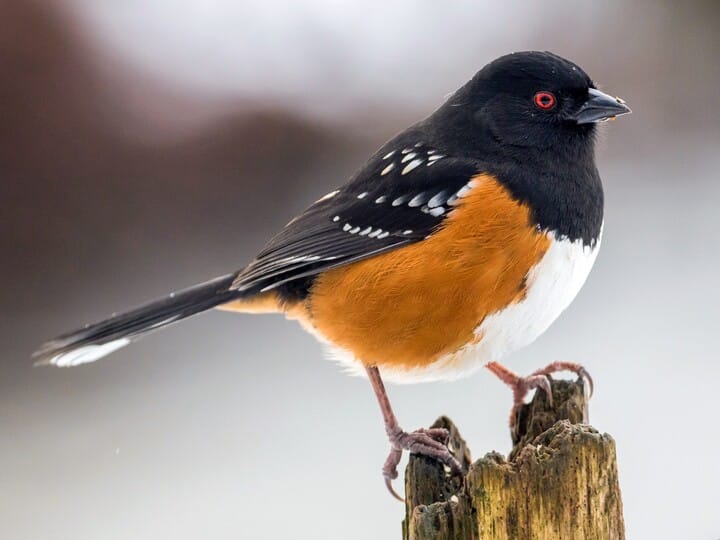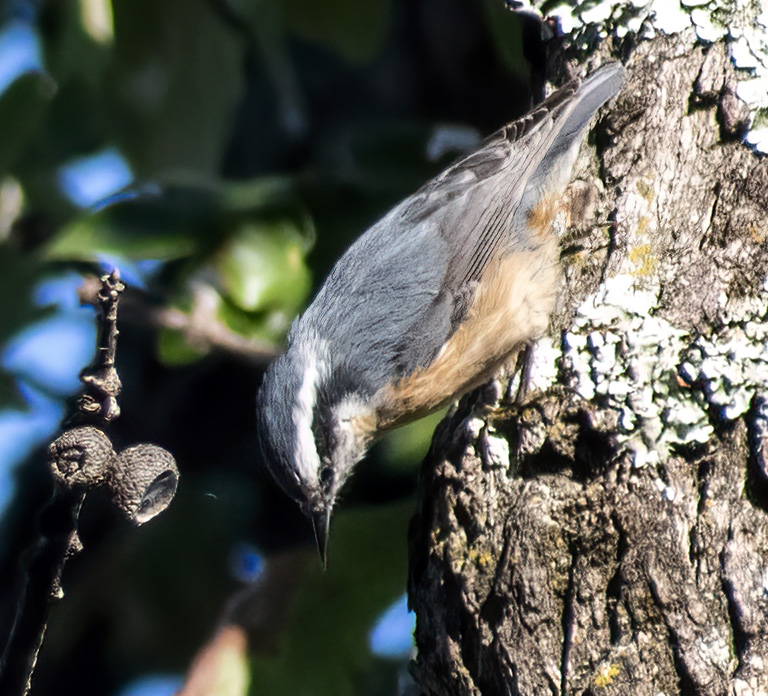It’s a classic sign of spring: that flash of reddish-orange darting across the lawn or singing cheerfully from a tree branch. Robins are one of the most beloved and familiar birds in North America. But did you know there are several other birds that closely resemble robins? From the spotted towhee to the red-breasted nuthatch, these robin copycats can easily fool the untrained eye.
In this article, we’ll explore the key characteristics of common robin lookalike birds and share expert tips for telling them apart. By the end, you’ll be able to impress your friends and family with your bird identification skills on your next nature walk! 🍃
Table of contents
Open Table of contents
Eastern Towhee: The Robin Doppelganger

If you spot a bird with a reddish-orange breast hopping around in dense brush, your first thought might be “robin!” But take a closer look - it could be an eastern towhee. These sparrow-sized birds are common in the eastern U.S. and often get mistaken for robins due to their similar coloring.
Read also: Discover the Fascinating World of Different Robin Birds and Their Look-Alikes 🐦
However, there are a few key differences:
- Towhees have a more muted, rusty orange breast compared to the vibrant reddish-orange of robins
- Male towhees have black heads and backs, while females are brown
- Towhees have small, thick, conical beaks perfect for cracking seeds, while robins have thin beaks for catching worms and insects
- Towhees have distinctive red eyes that really pop against their dark faces
So next time you see a flash of orange in the underbrush, take a moment to observe the bird’s shape, markings, and behavior to determine if it’s a true robin or a sneaky towhee.
Spotted Thrush: The Robin’s Coy Cousin
Belonging to the same family (Turdidae), it’s no wonder the spotted thrush bears a striking resemblance to its cousin the robin. Found in Europe and Asia, this shy bird inhabits forests and woodlands, softly singing its enchanting song.
To the untrained eye, spotted thrushes and robins are nearly identical. However, a few subtle features set them apart:
- Spotted thrushes have reddish-orange breasts covered with distinctive black spots
- They lack the gray back and reddish face markings of robins
- Spotted thrushes are slightly smaller and more compact than the lanky robin
So if you’re out for a stroll in the woods and hear a robin-like song, scan the foliage for a chubby little thrush covered in polka dots - you may have stumbled upon the elusive spotted thrush!
Red-Breasted Nuthatch: The Tiny Tree-Climbing “Robin”

At first glance, you might think someone shrunk a robin down to the size of a ping pong ball and taught it to walk upside down. But that diminutive orange-breasted acrobat clinging to a tree trunk is actually a red-breasted nuthatch!
These tiny birds are easy to mistake for robins while they’re flitting about high in the treetops. However, they have some unmistakable characteristics:
- Red-breasted nuthatches are much smaller than robins, only about 4 inches long
- They have a distinct black cap and eye stripe that robins lack
- Their backs are bluish-gray like a robin, but with a large white spot
- Nuthatches have short tails and long, pointed beaks ideal for probing bark crevices for insects
Red-breasted nuthatches are entertaining to watch as they hop up, down, and around tree trunks and branches in search of food. Their “rubber ducky” calls will also clue you in to their true identity.
Tips for Distinguishing Robin Bird Look-Alikes
Now that you know some of the most common birds that resemble robins, here are a few tips to avoid mix-ups in the field:
-
Observe size and proportions. Is the bird plump or slender? How long are the tail and beak relative to the body?
-
Look for distinctive markings. Does it have stripes, spots, wing bars, or eye rings? What color are the back, breast, and head?
-
Watch its behavior and movements. Does it walk or hop? Is it climbing trees or perching on branches? Foraging on the ground or gleaning insects from bark?
-
Listen for vocalizations. Does it sound like a robin’s rich caroling or a different call entirely? Many songbird ID apps can help match mystery birds to their songs.
-
Consider the habitat and range. What types of birds are common in the area during that season? Referring to a trusted field guide can help narrow down the possibilities.
With practice and patience, you’ll soon be able to confidently tell the difference between robins and their many lookalike birds. So grab your binoculars and get out there - a whole world of avian adventures awaits!